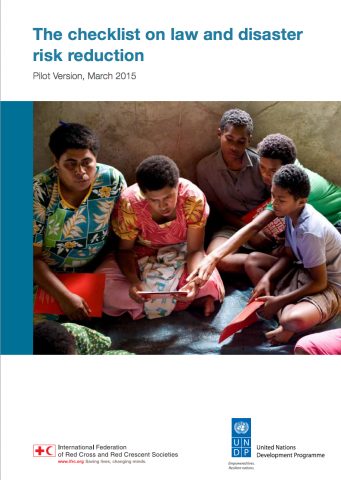The checklist on law and disaster risk reduction


The Checklist provides a prioritized and succinct list of ten key questions that lawmakers, implementing officials, and those supporting them need to consider in order to ensure that their laws provide the best support for DRR. It covers not only dedicated DRM laws but also other sectoral laws and regulations that are critical for building safety and resilience, as well as the environment, land and natural resource management. The Checklist is designed to: Serve as an assessment tool to guide a review process of national and local level laws and regulations that can enhance DRR; Provide guidance on how to bring national legal frameworks in line with existing international standards, in particular, the Post-2015 Framework for Disaster Risk Reduction. The Checklist also aims to foster a more integrated approach to disaster risk reduction by taking into account climate change and sustainable development considerations within the review of legislation.
International Federation of Red Cross and Red Crescent Societies & United Nations Development Programme, 2015.
